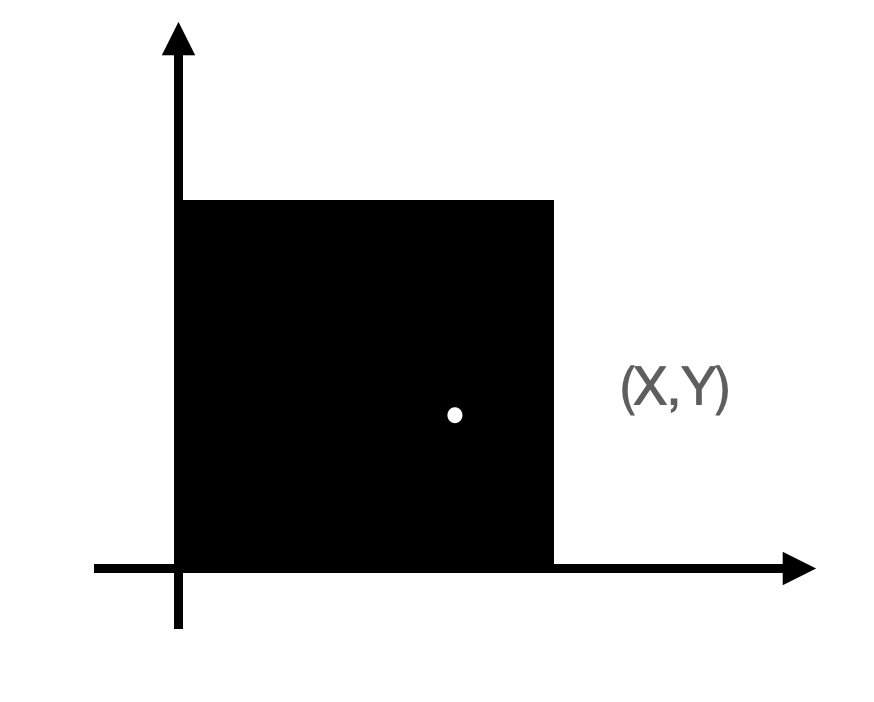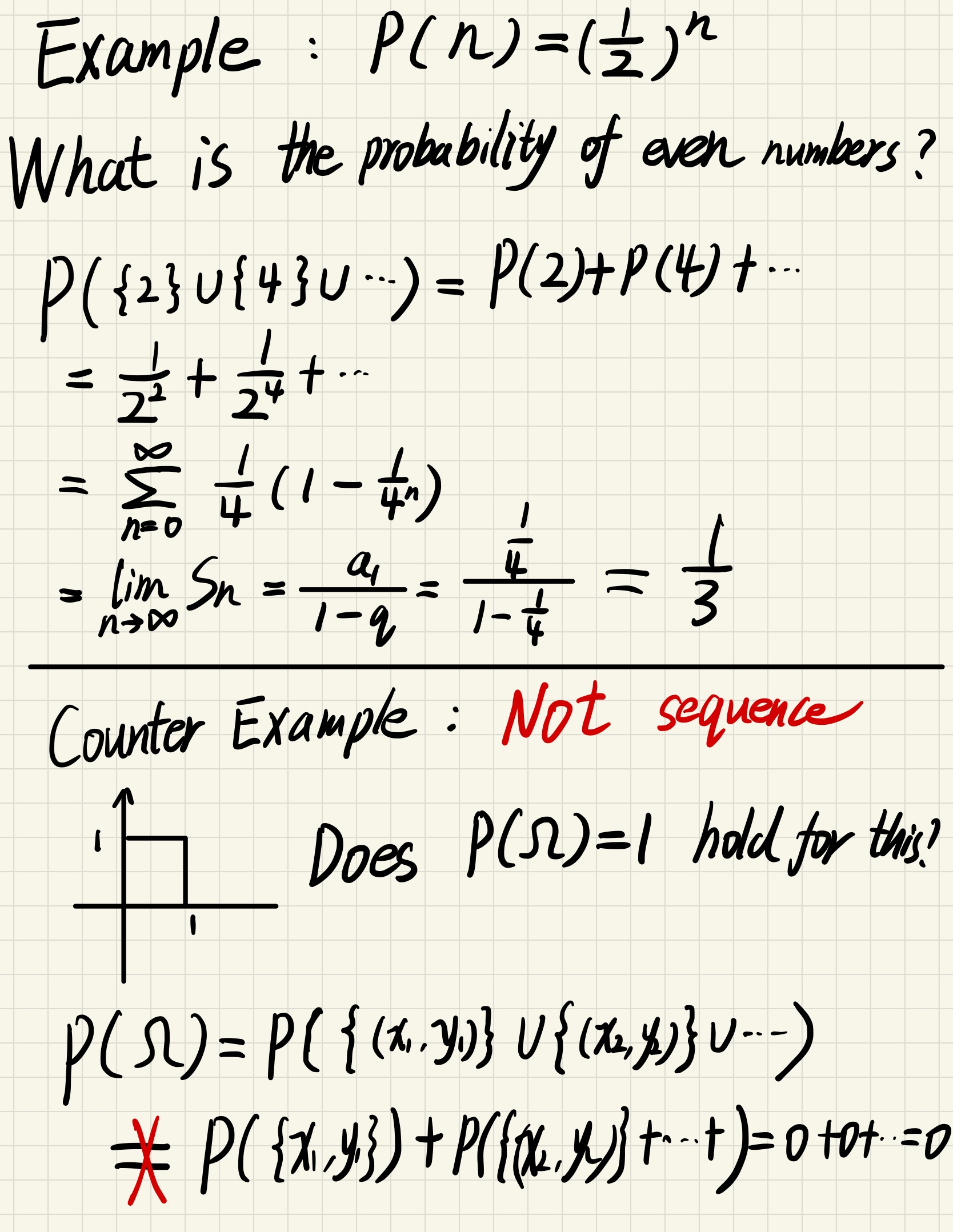MIT RES.6-012
introduction-to-probability
Overview of all element of the probability model
Sample space
probability laws
interpretation of probability
Sample space
All possible outcome of an activity/experiment, represented as a set.
Example
$$
\Omega(\text{flip a coin}) = {\text{heads},\text{tails}}
$$
$$
\Omega{(\text{roll a die})} = { 1,2,3,4,5,6 }
$$
Property
mutual exclusive (exact one outcome could happen at one experiment)
collectively exhaustive (the set include all possible outcomes)
At right granularity (do not include irrelevant details and mix experiment)
Look at the coin flipping example again, we can also have a sample space of
$$
\Omega(\text{flip a coin})={ \text{heads and rainy outside},\
\text{heads and no rain} , \text{tails and rainy} , \text{tails and no rain} }
$$
If we are investigating the connection of weather and coin, this space space could be right, but otherwise we would better choose a “simple” one and removing all weather information.
More examples
Sequential outcome
if the result of a experiment happen in “stage”/“phase” we can describe it by a tree
Say we roll a die twice
1 | SampleSpace = [(k,v) for k in range(1,7) for v in range(1,7)] |

Continuous example
the sample space can be continuous and contain infinite outcomes
Say we throwing a dart to the unit square in a 2 by 2 plane

$$
\Omega = { (x,y) | 0 \le x \le 1 \land 0 \le y \le 1}
$$
Probability axioms
We only need 3 axioms to construction out models
probability is the likelihood of a/some specified outcome will occur in one experiment
Trouble
In the following case, what is the probability of the dart hit exactly the white point ?

Since there are infinite points in this area, the precision will always be 0
$$
P(\text{hit white point}) = 0
$$
Solution
Instead of assigning probability to each individual outcome we assign probability to a subset of the whole set, that is, a subset of outcomes.
$$
P(\text{hit upper half}) = \frac{1}{2}
$$
We call this subset an event. In an experiment if the outcome is in the subset, we say that the event happened, otherwise event not happened.
Axioms
Nonnegative : $P(A) \ge 0$
Normalization : $P(\Omega) = 1$
Additivity : $if A \cap B = \emptyset, then P(A \cup B) = P(A) + P(B)$
Deduction
Draw the graph before your proving !!!
- $P(A) + P(\bar{A}) = 1$
$$
\because A \cap \bar{A} = \emptyset , A\cup \bar{A} = \Omega
$$
$$
\therefore P(\Omega) = P(A\cup \bar{A} ) = P(A) + P(\bar{A}) = 1
$$
- $P(A) \le 1$
$$
\because P(A)=1 - P(\bar{A}), P(\bar{A}) \ge 0
$$
$$
\therefore P(A) \le 1
$$
- $P(\emptyset) = 0$
$$
\because 1 = P(\Omega) + P(\bar{\Omega}) = 1 + P(\emptyset)
$$
$$
\therefore P(\emptyset) = 0
$$
- for disjoint A,B,C,… $P(A\cup B\cup C …) = P(A)+P(B)+P(C)+…$
So we have the way to compute the probability of an event A
$$
P(A) = P({a_1}) + P({a_2}) + … + P({a_n}) = P(a_1) + P(a_2) + … + P(a_n)
$$

- $if A \subseteq B , then P(A) \le P(B)$
$$
\because P(B)= P( A \cup (B-A)) , A \cap (B-A) = \emptyset
$$
$$
\therefore P(B)=P(A)+P(B-A) \ge P(A)
$$
- For non-disjoint set A,B, $P(A\cup B) = P(A)+P(B) - P(A\cap B)$


- For infinite discrete disjoin subsets, if all events/subsets can be written as a sequence then the additivity law will still hold
$$
P(A_1 \cup A_2 \cup … ) = P(A_1) + P(A_2) + …
$$
Examples
Suppose we flip a coin, record the number of flipping before heads first appear

Summary
What is probability
a bunch of mathematics (meaningless)
the frequency of the event( how often will it happen in infinite times of experiments?)
Probability does not tell us exactly what will happen, it is just a guide (Probability says that heads have a 1/2 chance, so we can expect 50 Heads. But when we actually try it we might get 48 heads, or 55 heads … or anything really, but in most cases it will be a number near 50.)
a framework of analyzing uncertain outcomes
